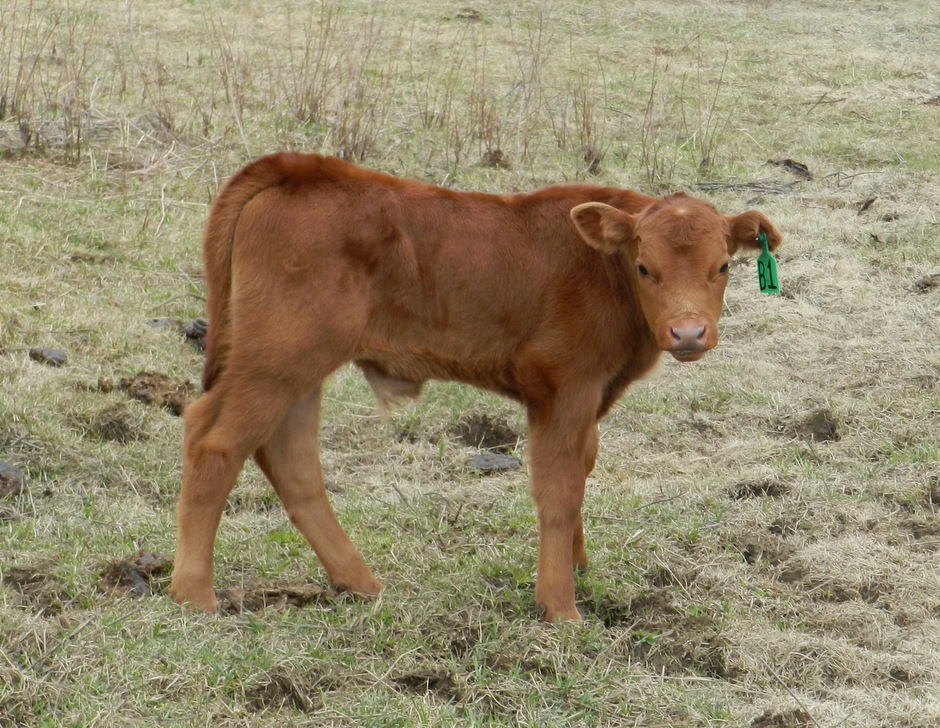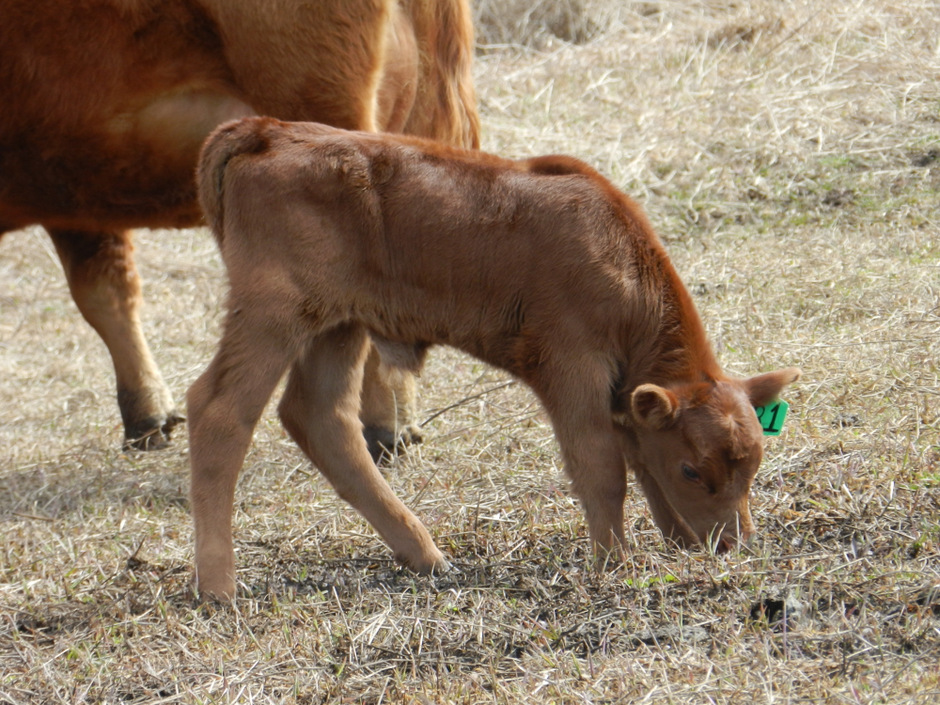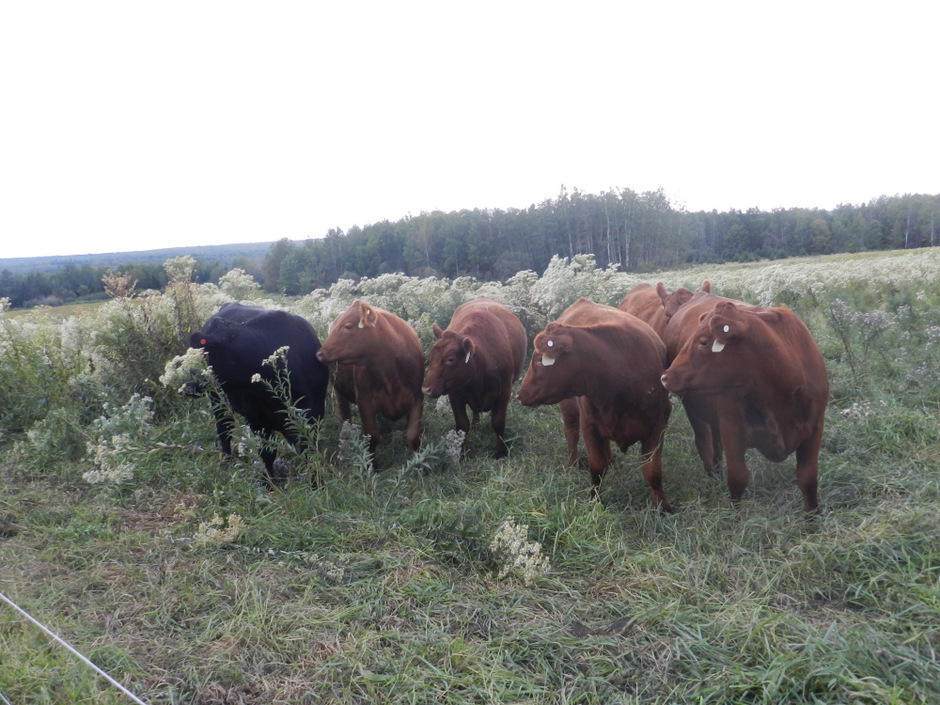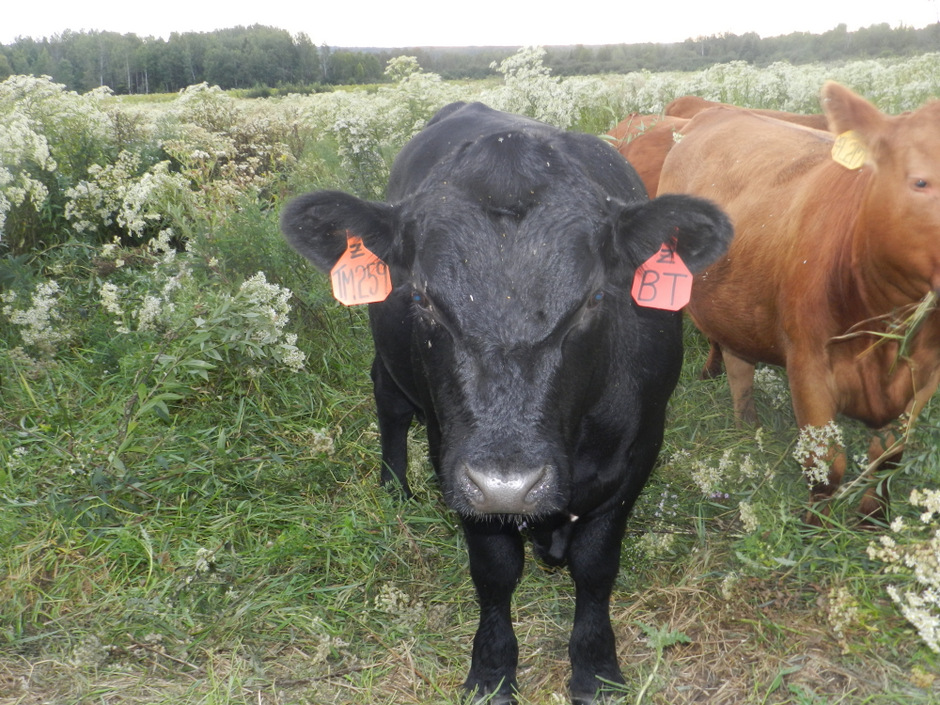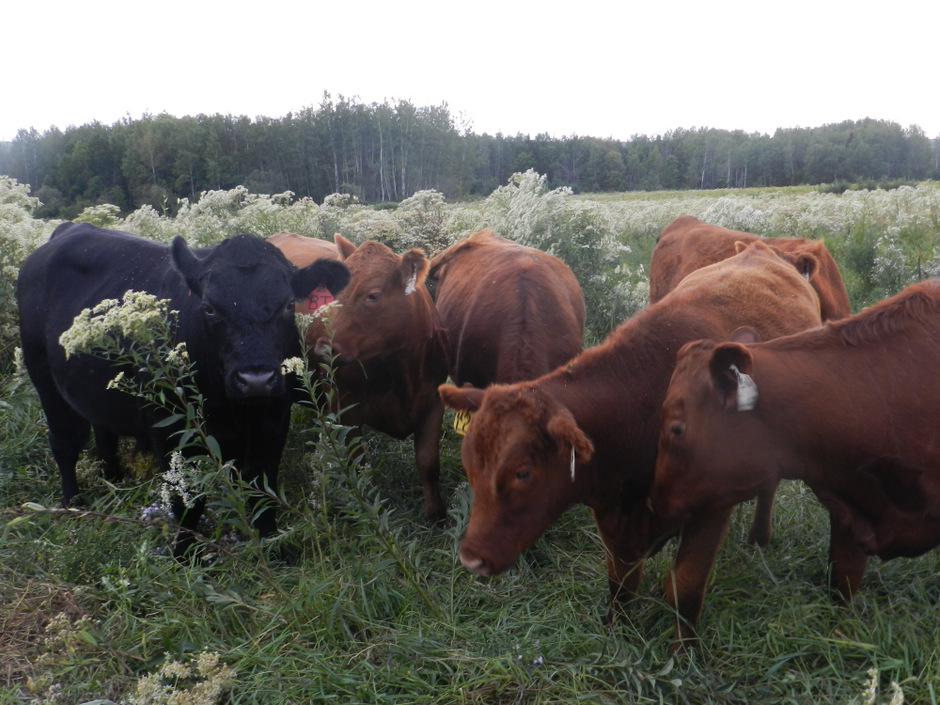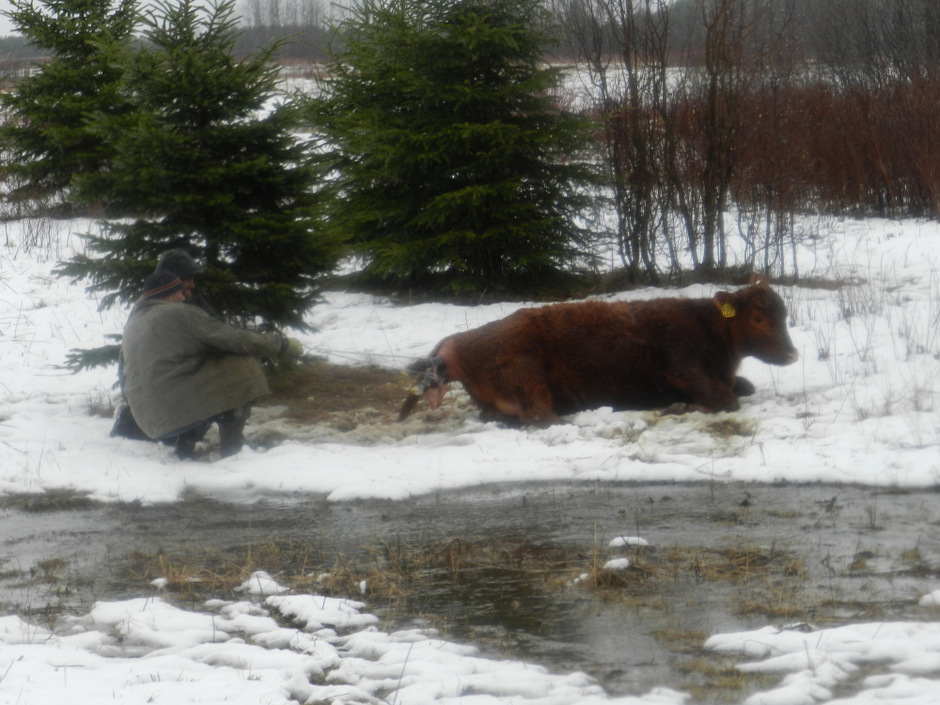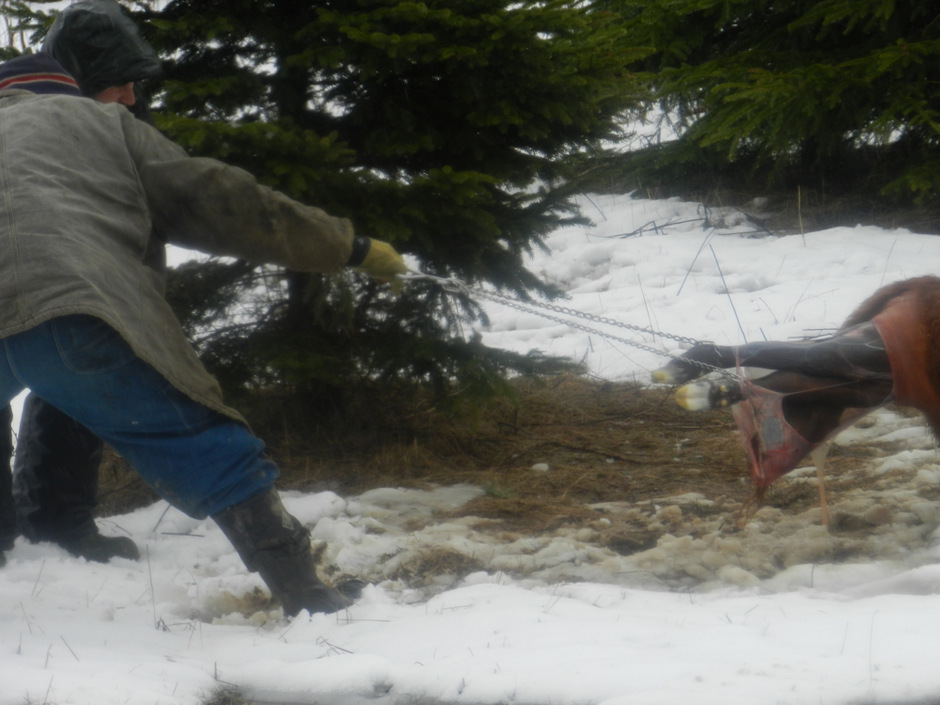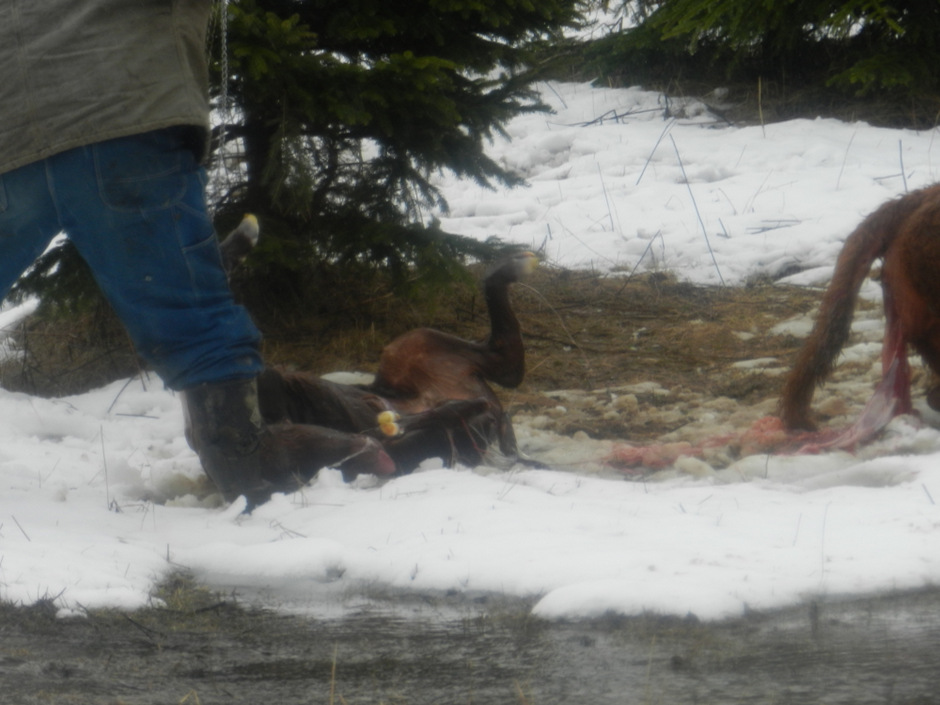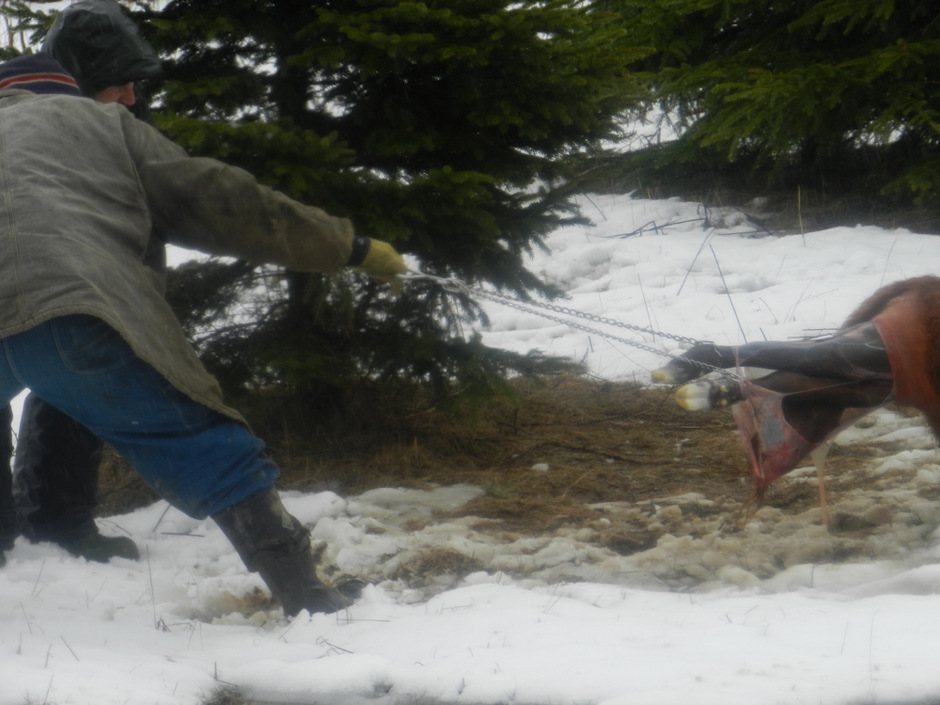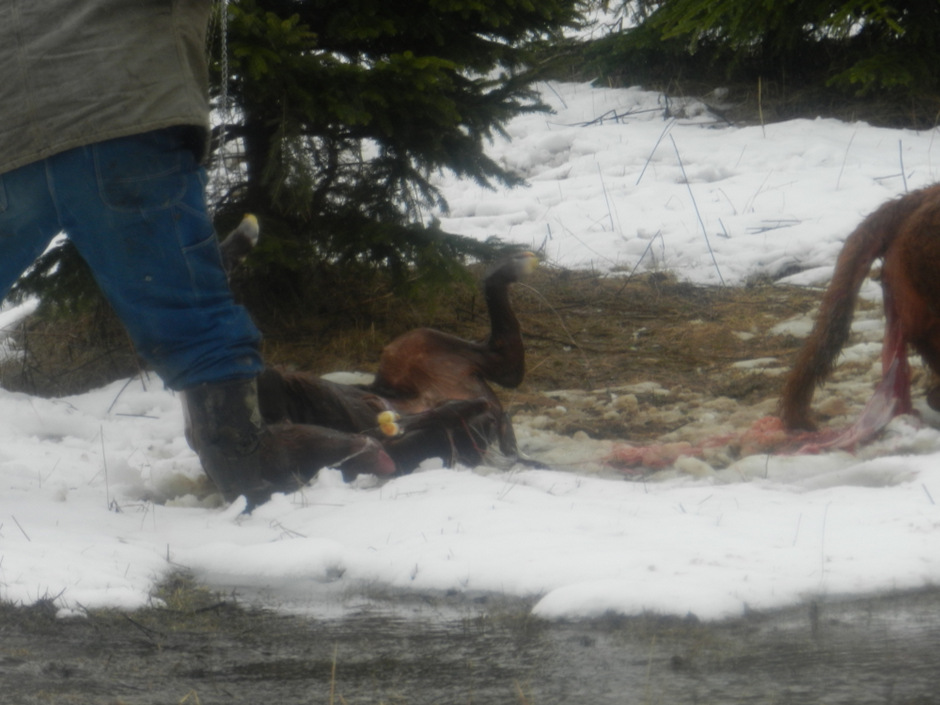
In our last Calving post, we shared the birth story of our first ever calf a harrowing and nerve-racking 1st calving experience for all of us.
Today, we continue with the story of that very special calf, B1.
Hours turned into days as we fought against the elements and the clock to save our very first calf.
Here is B1’s story….

After calf B1 made his entrance (with the help of chains) that snowy, cold and wet night, we really did not know what to expect and what exactly to do…. All of us were slightly in shock and to be perfectly honest, scared for this calf’s life. He was barely alive.
We were so fortunate to have our good friend and mentor, Gene, there with us. He guided us, kept us calm and focused us on the task at hand. In a kind and supportive voice, he told us we should have pulled the calf earlier. We learned a hard lesson that night. It was a beginners’ mistake. We should have pulled the calf 30 or more minutes earlier. I guess you don’t know until you actually go through it, right?
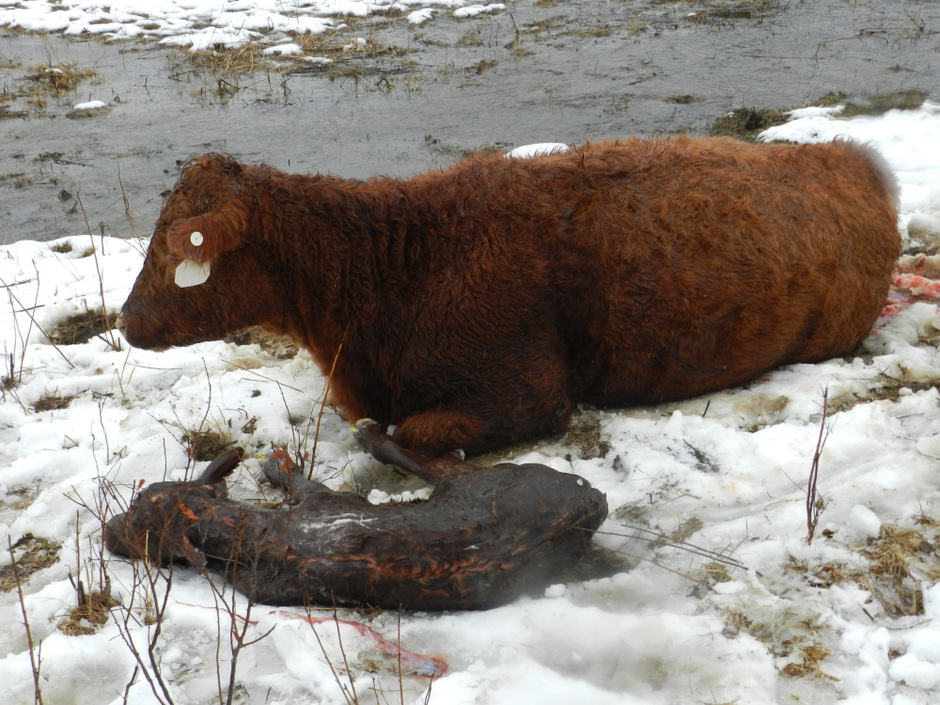
Due to being stuck in the birth canal for too long, the calf’s head and tongue were extremely swollen. His swollen, protruding tongue was the first thing we saw after he came out. I figured we would be burying a calf that night. Gene gently pumped …to help clear fluid from the lungs and stimulate breathing. The calf was breathing but barely. Gene told us to rub along the calf’s spine to help stimulate breathing as well. We rubbed and we rubbed. The breathing got a little stronger and we knew that this calf needed to stand and nurse as soon as possible. After a couple of halfhearted attempts, it was obvious that this calf was simply too weak, and too ‘injured’ to stand and nurse.

The temperature was quickly dropping and the pasture was a maze of little muddy rivers from the snow and rain that day. If we left this calf, in the hopes of him standing and nursing, overnight, we had no doubt we would be finding a frozen, dead calf the next morning. We had no intention of that happening. We were going to give all that we had to save this calf. We needed to get colostrum in this calf ASAP!
Colostrum is absolutely critical for the health of a newborn calf. Colostrum is often referred to as “liquid gold” and for good reason. This milky substance is full of vitamins, minerals, fats, carbohydrates and proteins, providing the very best nutrition needed to help build the immune system in those first critical days and to give the calf the best start possible for a strong and healthy body. Click here to read more about the importance of colostrum in the hours after birth.
We made the decision to load the calf in our sled, hook the sled to our four-wheeler and bring this little guy into the house for the night. We could hear the mother cow’s cries all the way back at the house. This was going to be a rough night for all.
Our immediate plan was to mix powdered colostrum and bottle feed it to the calf. Sounds simple and easy, right? Well, because of the calf’s extremely swollen tongue, he could not nurse the nipple on the bottle. For almost four hours, we worked as a team, one holding the calf’s head up (he was too weak to even hold his head up) and the other gently working the nipple into his mouth, squeezing in the colostrum and encouraging him to swallow the liquid. We had to be careful, though, not to force too much liquid on him; because the calf was barely swallowing, we did not want the colostrum to get into his lungs and for him to develop pneumonia.
All the while, we kept the calf wrapped in dry, warm towels in front of our wood stove. The calf did make a few more halfhearted attempts to stand but even with our assistance, he could not support his own weight. He simply collapsed to the ground every time we helped him up. By midnight, we had fed him around one quart of colostrum and he was dry and toasty. We left him in front of the wood stove, said some prayers, and went to bed.
In the morning, I could hear him in the family room, trying to stand. His weakness combined with our slippery, laminate floors were not a recipe for standing up. But, we knew he was alive and kicking! He had made it through the night. We had made it through one small battle but the war was far from over.
That morning, we immediately went to work, mixing up another bottle of colostrum. But, the calf still could not nurse the bottle. If we ever wanted this calf to stand on his own and walk around, we needed him to build up his strength. The clock was ticking and every minute was precious. Bottle feeding simply was not going to work. We were going to have to tube-feed this calf.
Throughout the course of that day, in total, we tube-fed the calf almost four quarts of colostrum. In addition, we also spent a lot of time encouraging the calf to stand and helping to support him while standing.

Despite our efforts, this calf appeared to have given up. He had no desire to live it seemed. Luckily, the weather conditions started to improve and we decided to take the calf to visit his mom. She immediately welcomed him back and went to work on grooming him and encouraging him to stand. He did not stand during this visit but we observed much more spunk and a definite will to live.
Temperatures were predicted to dip down below freezing that night so we had no choice but to bring the calf back in for the night. It was simply heartbreaking to take the calf away from his mom…again… She bellowed and ran after us as we raced to get the calf out of the pasture and to the house without her attacking us. We were actually very pleased by her protective nature and natural mothering instincts. She was already a very good mom.
Again that night, we prayed that we would wake up to a live calf. We set our alarm clock for a middle of the night tube feeding. During that middle of the night feeding the calf peed for the first time and pooped two times. Very encouraging. We found another poop and pee when we woke in the morning. The calf was trying with everything he had to stand. He had some will to live now. We took him back to see his mom. Both calf and mom seemed very relieved to be back together and imagine our surprise when that calf stood on his own and took a few wobbly steps!
They stayed together for the rest of the afternoon. To our knowledge, the calf did not stand and walk again. He certainly was not nursing. The time had come for his afternoon feeding. This time was going to be different, though. We had talked with Gene and he strongly advised that we find a way to keep the calf outdoors overnight. He worried about respiratory issues arising from the back and forth, from inside to outside. This calf needed to adjust to outdoor conditions, both day and night.
Heavy rain was predicted for that night and we knew that we needed to provide some sort of shelter for the calf. So, using scrap materials on the farm, we set-up an area for the calf inside one of our storage units. We loaded the calf back in the sled and brought both mom and calf to the pasture with the storage unit. At this point, things got a bit dicey. We needed to give the calf his afternoon tube feeding. In order to do that, we needed to bring him into the storage unit and put up a makeshift gate to prevent the mom from attacking us while we fed the calf.
In the course of trying to get the calf from the sled to the storage unit (the calf kept standing up and walking away from the unit), the mother cow decided that enough was enough and rammed Jer to the ground. Understandably, this mother cow was at the end of her rope, fraught with fear for her and her calf’s lives. What she did was a natural instinct for her and my response back was a natural instinct as well. There will be times in your life where fear and adrenaline will drive you to act, to act before your brain even processes the potential danger you are putting yourself in. You don’t think, you just go. After Jer hit the ground, I did what I had to do to protect and shield him from the mother cow while he regained his footing. Fear drove both me and that mother cow for those intense minutes. She was protecting her own and I had to protect my own. Jer and I work as a team on this farm. This is our shared dream, and I wasn’t going to let it end that afternoon.
We need to be reminded that these animals are very large and very strong and when you add in elements like fear, their strength will seem endless. This behavior is something that you need to respect. You have to be alert and on yours toes every second while working around these animals.
Moving on, we eventually did get the calf into the storage unit and tube fed him two quarts of colostrum. Not knowing if we would get this opportunity again with him, we went ahead and worked the calf. Using the supplies in our calving bucket, we gave him a shot of Multi-min, tagged his left ear, banded him, and squirted iodine into his navel to help prevent infection. We also did a hoof measurement to try to get a weight. We reunited the calf and the mother cow, and we walked away from the pasture that afternoon a little more seasoned and a bit smarter than when we entered it.
This would be night three for this calf. We were extremely anxious going to bed that night, fearful that the calf would stumble out of the storage unit and drown in the rain and mud. Jer checked the mother and calf in the middle of the night and all was well.
In the morning, I immediately jumped out of bed, jammed my feet into my muck boots, grabbed my hat and jacket and booked it to the storage unit pasture. As I approached the pasture, I could see a brown form huddled near a hay bale. I ran faster and could see that it was the calf. He had made his way out of the storage unit and walked a good distance to the shelter of the hay bales. As I ducked under the fence and approached him, he moved. I was almost dizzy with relief. I could have cried. As I knelt down beside him, he immediately jumped up and walked straight to his mom. What he did next was simply a miracle – he nursed him mom. I stood in shock and in awe of the sight before me. Again, I could have cried. I called Jer on the phone and told him that I didn’t think we would have to worry about a bottle calf, we had a nurser on our hands!!


Calf, B1, continued to nurse his mom that day and he never looked back. 🙂
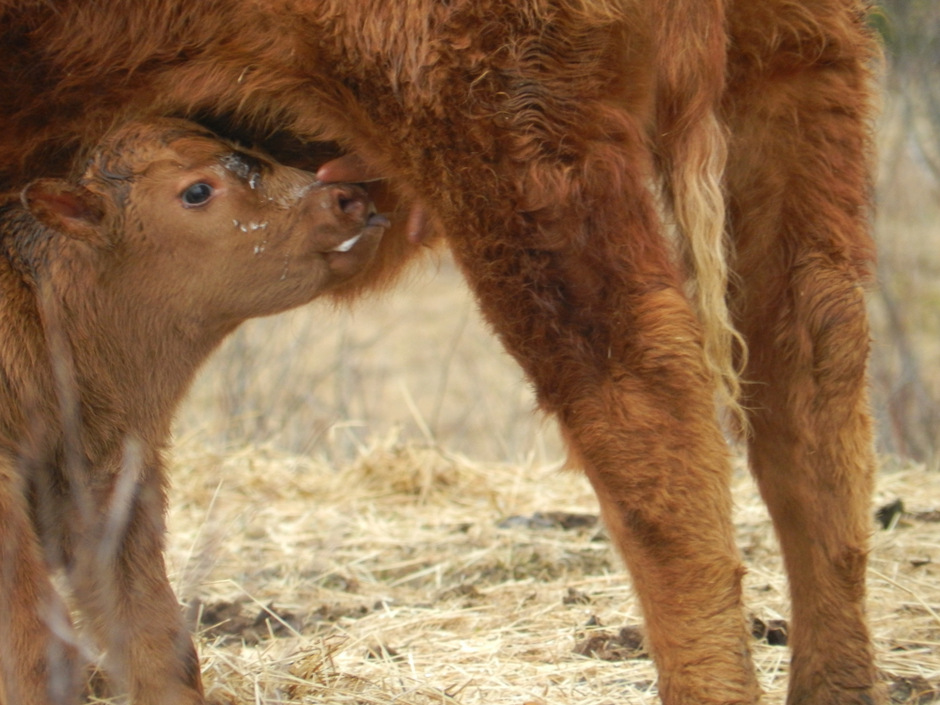
As I am writing this post, B1 is frolicking in the pasture with our other seven calves, strong, healthy, and with a definite will to live.
And that, folks, was our introduction into the world of calving!
Thank you for sharing in our story and please enjoy some more pictures of B1, below:



